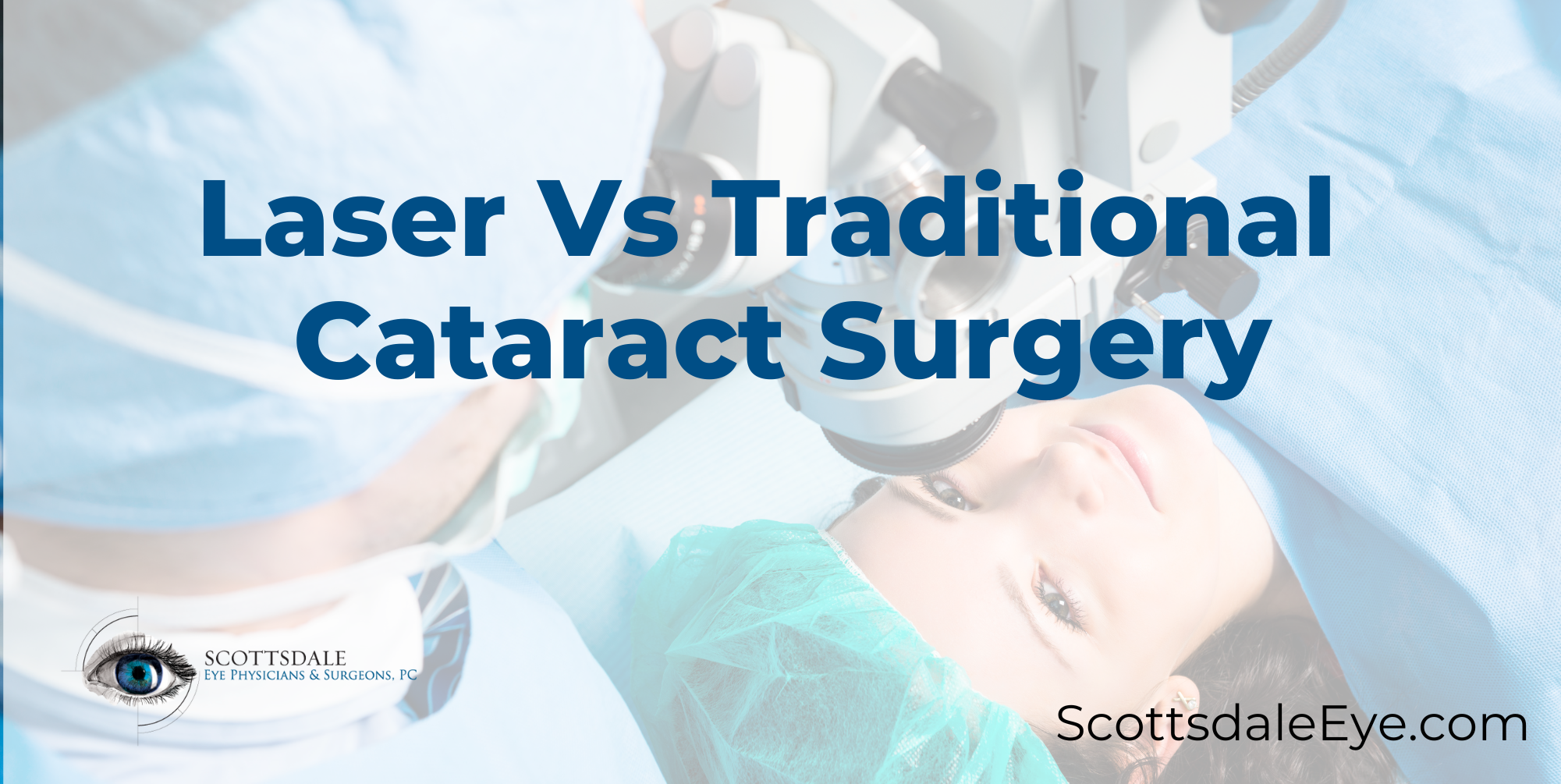What is a Cataract?
Breaking down the difference between Laser vs. Traditional Cataract Surgery starts with understanding Cataracts. Cataracts occur naturally as we age and a build-up of protein causes clouding in the lens. Cataracts are the most prevalent cause of eyesight disturbances. By age 65 more than 90% of all Americans either have a cataract or have had cataract surgery. Over time, the cataract may grow larger and cloud more of the lens, worsening vision. In addition, cataracts can result from exposure to toxic substances, diseases such as diabetes, or arise after an eye injury. A cataract can develop in one or both eyes and fortunately can be treated with a common and safe surgery.
Cataract Symptoms
The most common symptoms of cataracts are cloudy, blurred or dim vision. Other common symptoms include sensitivity to glare, poor night vision, seeing haloes around lights and fading yellow of colors.
TYPES OF CATARACT SURGERY
Cataract surgery is safe and highly effective in treating cataracts. During surgery the doctor breaks up and removes the old cloudy lens and replaces it with a new lens called an intraocular lens. Cataract surgery is performed under a local anesthetic and takes around 15 minutes.
so lets talk about Laser Vs Traditional Cataract Surgery
There are two types of cataract surgery
Traditional Surgery:
Traditional cataract surgery is done by hand using a blade to make incisions in the cornea or the front part of the eye. The surgeon then utilizes ultrasound power to break up the lens and remove the old cloudy lens from the eye.
Laser-Assisted Cataract Surgery:
During laser-assisted cataract surgery a laser is used to perform many steps of the surgery. The laser software is able to capture a clear picture of the eye detailing the exact size, depth and location of the cataract. The laser, known as a femtosecond laser, is used to soften the lens requiring less ultrasonic waves to break up the old cloudy lens into pieces. After the lens is broken up the Doctor uses suction to remove it and inserts a new lens.
Key reasons why many patients go the laser-assisted route:
- Makes the procedure more predictable
- Less-invasive, safer removal of the lens
- Better centration of the lens and less likely to shift during healing
- Friendlier to the eye
FEMTOSECOND LASER
The femtosecond laser has established the gold standard in the treatment of cataracts. It enables precise details about the eye resulting in a superior outcome and less risk.
TYPES OF INTRAOCULAR LENSES
Whichever type of cataract surgery you choose the surgeon will implant a new lens into the eye. Patients now have the option of choosing a customized intraocular lens depending on their specific vision requirements. There are a few different lens options to choose from.
MONOFOCAL
The most common kind of IOL used in cataract surgery is the monofocal IOL. This lens type is used to restore vision in a single field of focus, which is typically utilized to see distant objects well. Individuals who had presbyopia or astigmatism before cataract surgery will still need glasses to correct their vision after surgery, mostly for reading.
MULTIFOCAL
Multifocal lenses have multiple focal points, or zones, which allow the user to achieve two vision distances simultaneously. This allows the eye to focus directly on near objects or move the vision point away to objects farther.
TORIC
A Toric lens is a specialty type of lens to correct Astigmatism. Astigmatism is a kind of refractive error caused by an irregular corneal surface. This causes blurry vision at all distances. Toric IOLs can correct astigmatism. This lessens the need for glasses.
Cataract surgery is one of the most common eye surgeries performed. Nationally over 500,000 surgeries are performed each year. At Scottsdale Eye we pride ourselves on taking your eye care seriously! Have questions about the procedure? Give our office a call at 480-994-1872 and make a cataract consultation today! Your vision will thank you!

